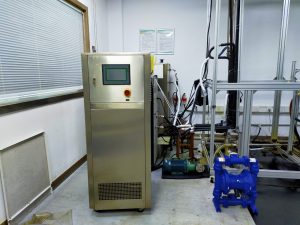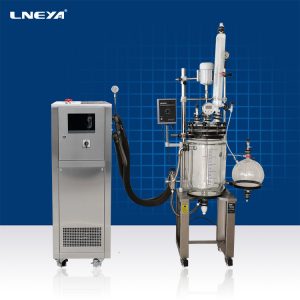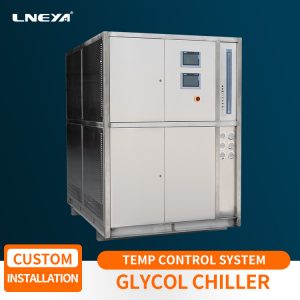The Reasons of Frosting on Ultra low Temperature Recirculating Chillers
Frosting will appear when many users take advantage of ultra low temperature recirculating chillers, while some are not. It is confusing and whether it is relevant to refrigeration.
First of all, why does ultra low temperature recirculating chillers frost? To sort it out, we can turn our eyes on the reasons of direct-cooling ultra low temperature recirculating chillers. The frost is a white crystal of vapour which will congeal on the surface of ultra low temperature objects.
The air will frost on the surface of the inner wall inside ultra low temperature recirculating chillers, which is the root cause. It will affect the heat transfer efficiency, resulting in the decline of refrigerating capacity, so the users should remove it manually.
We understand why the ultra low temperature recirculating chillers will frost on one hand, and for the other hand the air-cooled one is frostless. Are their reasons against each other? The principle of that is the air-cooled ultra low temperature recirculating chillers applies air to refrigerate. When high temperature air flows through the inner evaporator, both of them will change the heat directly because they are in opposite conditions so that the temperature of air will lower.
Meanwhile, cool air is blown in the ultra low temperature recirculating chillers, which is exactly what air-cooled one uses for cycling constantly to reduce its own temperature. However, vapor always exists in the air, so it becomes solid when it freezes, which shows that whenever heat transfer happens, frosting will be in the ultra low temperature recirculating chillers.
In fact, air-cooled ultra low temperature recirculating chillers is carried with frost, but only on the surface of the evaporator. When opening the door, we can not see it because the frost is inside. Thus, we call it as frostless on the whole.
Therefore, we make it clear why ultra low temperature recirculating chillers is out of frosting.
Related recommendations
-
Introduction of refrigerators for metal workpieces such as deep-frozen bearings
868LNEYA's continuous-freezing work piece cryogenic box has a fast cooling rate, and the low temperature can reach -150℃. It can be used for cold assembly of bearings and mechanical parts. The cryogenic treatment can improve the mechanical properties...
View details -
The main purpose of the reactor heating and cooling system
1198The reaction kettle heating and cooling system is suitable for high-purity metals, rare substance purification, laboratory environment simulation, magnetron sputtering, vacuum coating and other industries. The large-scale cryogenic pump unit can p...
View details -
Benefits of using heating and cooling equipment in the laboratory
1212Laboratory heating and cooling equipment (also known as: cold and heat integrated machine, refrigeration and heating cycle device) is a device that integrates cooling and heating, heating and cooling can be quickly converted, and the same medium (...
View details -
The Main Application Areas of Air Cooled Chillers
1330Inthe domestic and international industrial water chiller market, our most commonindustrial water chiller equipment can be roughly divided into two differenttypes, one type is industrial air cooled chiller, the other type is industrialwater co...
View details
 LNEYA Industrial Chillers Manufacturer Supplier
LNEYA Industrial Chillers Manufacturer Supplier













